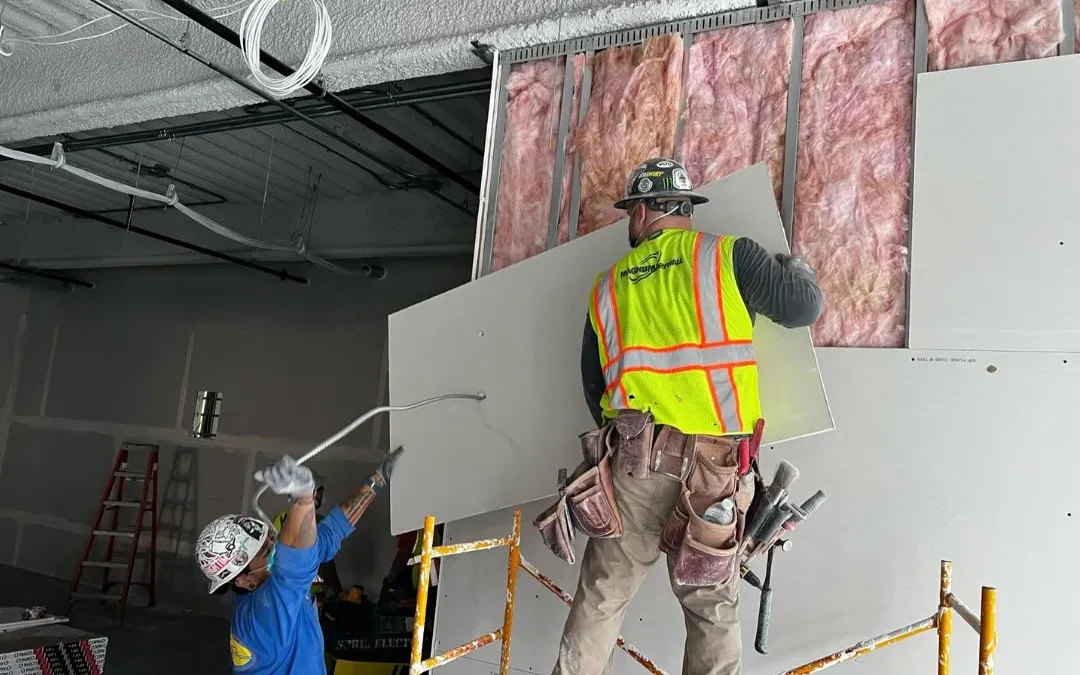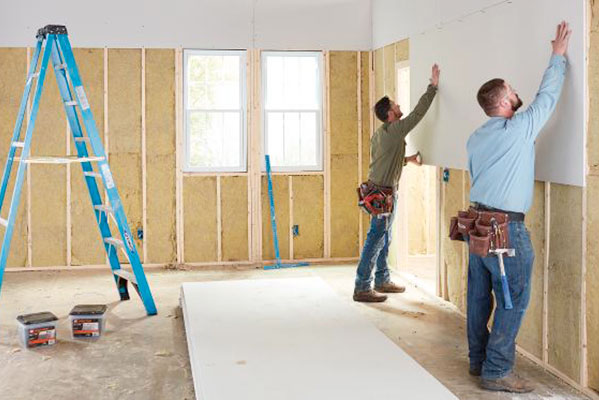Outstanding Sheetrock Repair Fort Worth to Boost Your Home
Outstanding Sheetrock Repair Fort Worth to Boost Your Home
Blog Article
Drywall Setup Made Easy: Tips for Perfect Results
Drywall installation is frequently perceived as a challenging task, yet with the appropriate strategy and expertise, it can end up being a manageable endeavor. Picking top quality materials and preparing the installation location are vital primary steps that set the foundation for success. In addition, mastering techniques for reducing, hanging, and completing drywall can considerably impact the end result. As we explore these crucial ideas, you may locate that even the tiniest modifications in your approach can bring about incredibly boosted results, leaving you to take into consideration exactly how these practices can change your next task.
Picking the Right Materials
Choosing the ideal materials for drywall setup is crucial to accomplishing a sturdy and aesthetically pleasing surface. drywall contractor. The main part, drywall sheets, generally been available in numerous thicknesses, with 1/2-inch sheets being conventional for indoor wall surfaces. For locations requiring extra wetness resistance, such as kitchens or restrooms, think about making use of environment-friendly board or cement board, which are specially developed to stand up to moisture

Additionally, selecting the right fasteners-- either nails or screws-- is essential for safeguarding the drywall to the framework. Drywall screws are usually favored for their holding power and decreased risk of popping. Take into consideration the finishing touches such as primer and paint, which not only enhance the appearance yet also secure the drywall from dampness and wear.
Preparing the Installment Location
Before beginning the drywall installment procedure, it is necessary to prepare the setup area extensively. This preparation involves numerous vital steps to ensure a smooth and effective task. Clear the location of any type of furniture, home appliances, or obstructions that can hinder accessibility. A clean work space lessens the risk of damages to existing items and enables efficient activity during setup.
Next, check the walls and ceiling for any type of blemishes, such as cracks, holes, or mold and mildew. Address these issues in advance; spot any kind of damages and enable enough time for repairs to dry. In addition, ensure that electric outlets, buttons, and pipes are effectively positioned and represented, as this will certainly influence drywall placement.
Take into consideration the ecological problems. A secure temperature level and moisture degree are essential for optimum attachment and efficiency of the drywall products. If essential, make use of a dehumidifier or heating system to develop ideal problems.
Trimming and Hanging Drywall
The key to effective drywall setup lies in the accurate cutting and hanging of the panels. Begin by measuring the room properly, considering any type of obstructions such as electrical outlets or windows. Use a straight side and an energy knife to score the drywall along your dimensions, after that snap it along the scored line for a tidy break. For even more elaborate cuts, such as around outlets, a drywall saw can be utilized for accuracy.

Constantly function from the top down and visit here left to right, making certain that you maintain a staggered pattern to improve security. Correctly hanging the drywall establishes the foundation for a smooth surface, inevitably leading to remarkable outcomes in your drywall project.
Insulation and Mudding Strategies
While proper cutting and hanging click for more info of drywall establishes the phase, the next vital action involves grasping taping and mudding strategies to ensure a seamless surface. Insulation is essential for reinforcing joints and stopping splits; it involves embedding tape into the applied joint substance (mud) Beginning with a top quality fiberglass or paper tape, applying the tape over the joint and pressing it into the wet mud using a taping knife, guaranteeing no air bubbles stay.
As soon as the tape remains in area, use a thin layer of joint compound over the tape, feathering the edges to create a smooth transition to the drywall surface. Allow this layer to dry totally before sanding it lightly to eliminate flaws. Repeat this procedure, using additional coats of mud as needed-- commonly a couple of layers-- while progressively expanding the application area with each layer to attain a smooth appearance.
After the last layer dries out, sand the surface area with a fine-grit sandpaper till smooth. drywall contractor. Remember to wear a mask during fining sand to stay clear of breathing in dirt bits. Grasping these taping and mudding methods is vital for accomplishing a professional-quality finish in your drywall installation
Ending Up Touches for Excellence
Accomplishing a perfect drywall installation exceeds mudding and taping; it finishes in the completing touches that elevate the overall look. These final steps are crucial in making certain a professional-grade coating that improves the aesthetic appeals of your space.
Begin by sanding the dried out joint compound to create a smooth surface area. Utilize a fine-grit sandpaper and a fining sand block or post sander for optimal control. Pay certain focus to sides and corners, as these locations have a tendency to require even more precise job. After sanding, clean down the walls with a damp fabric to remove any kind of dust fragments, making sure a clean surface area for painting.
Following, apply a primer especially developed for drywall. This action is important, as it aids seal the joint compound and gives an uniform base for the overcoat. As soon as the primer dries, evaluate for any flaws, and repair as needed.
Final Thought
In final thought, effective drywall installment pivots on the cautious selection of materials, extensive prep work of the setup location, and exact execution of cutting and hanging strategies. Proficiency of taping and mudding procedures is important for achieving a smooth finish.
Drywall installation is typically viewed as a complicated job, yet with the ideal technique and expertise, it can come to be a convenient venture.Choosing the suitable materials for drywall installation is essential to achieving a durable and cosmetically pleasing coating.Prior to beginning the drywall installation procedure, it is crucial to prepare the installment area thoroughly. Mastering these taping and mudding strategies is important for accomplishing a professional-quality finish in your drywall installment.
In verdict, you can look here successful drywall installation pivots on the cautious selection of products, complete preparation of the installment location, and accurate implementation of reducing and hanging techniques.
Report this page